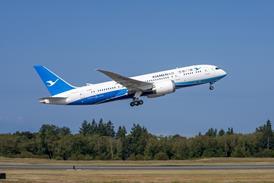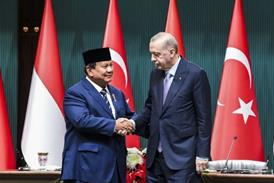IndiGo believes groundings of its Airbus A320neo-family aircraft for inspections of their Pratt & Whitney geared turbofan (GTF) engines is likely to have peaked in the mid-70s during its fiscal second quarter.
It made that assessment as it reported a net loss for the seasonally weak July-September period, following seven straight quarters of profit.

“We have now turned a corner with the grounding situation,” said IndiGo chief executive Pieter Elbers during an earnings call on 25 October.
Groundings have already dropped to the high-60s, IndiGo reports, and are expected to reach the mid-40s by the start of the next financial year in April 2025.
“Based on this development, we will start adjusting our mitigating measures,” Elbers states.
Those mitigating measures refer to the various steps taken by the carrier to offset the temporarily lost capacity, including holding on to older aircraft for longer, some short-term leases and the induction of new aircraft.
Meanwhile, IndiGo claims that its second-quarter result was in line with expectations, and that its net loss of Rs9.9 billion ($118 million) partly reflects demand “normalisation” following unusually positive performance metrics in the same three months of 2023, amid the post-Covid boom in travel.
“In a traditionally weaker second quarter, results were further impacted by headwinds related to groundings and fuel costs,” Elbers says.
Those headwinds pushed up IndiGo’s unit costs excluding fuel by 16.8% year on year, and its fuel unit costs by 4.2%. Its yield was up 2.3% but load factor fell by 0.6 percentage points to 82.6%.
The airline’s capacity rose by 8.2% during the three months, with passenger numbers 5.8% higher at 27.8 million.
IndiGo’s fleet grew by 28 units during the three months, reaching 410 aircraft.















































